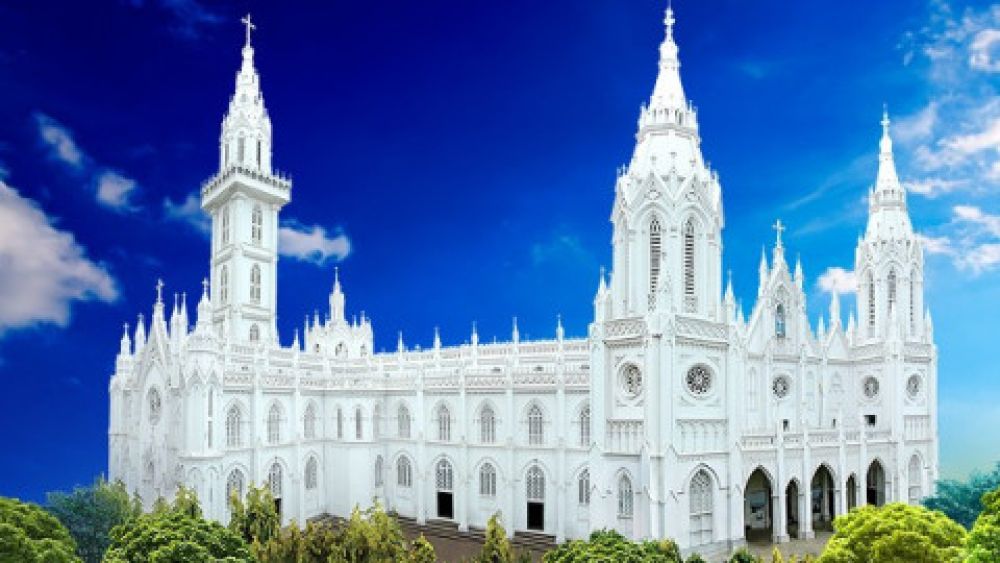

The Our Lady of Dolours Basilica, also known as the Puthan Pally (New Church), is situated in the heart of Thrissur, the cultural capital of the South Indian state of Kerala. An imposing example of Gothic style architecture, the basilica stands as the tallest church in Asia and is a notable landmark in Kerala's skyline.
Construction of the church began in 1929 under the visionary leadership of Mar Francis Vazhappilly, the Bishop of Thrissur. It was completed in 1940 and later elevated to the status of a minor basilica by Pope John XXIII in 1957. As the name suggests, the basilica is dedicated to the Virgin Mary, under the title of Our Lady of Dolours, reflecting the Christian belief in Mary's suffering as the Mother of Jesus.
Initially serving as a spiritual center, the basilica soon became an attraction not just for the devout but also for visitors interested in architecture, art, and history. Over the decades, the church has seen a steady increase in footfall as word of its grandeur has spread.
The annual Thrissur Pooram, one of the most spectacular temple festivals in Kerala, has contributed to the increasing popularity of the basilica as tourists attend the festival and also visit the church. The church enhances the festive experience with its exceptional lighting during this period, attracting photographers and cultural enthusiasts.
Religious Tourism: The basilica continues to be a significant destination for religious tourists, especially during the Holy Week and the feast of Our Lady of Dolours, which witness large gatherings for the ceremonial rituals and prayers.
Architectural Tourism: With its Gothic towers, beautiful stained glass windows, and detailed frescoes, the basilica draws aficionados of art and architecture from across the globe. Many come to study its unique blend of cultural styles and the intricacies of its construction.
Cultural Tourism: Visitors are also intrigued by the basilica's role in the social and cultural tapestry of Kerala. The church is often included in the itineraries of cultural tours that showcase the rich variety of the state's religious heritage.
In recent years, the management of Our Lady of Dolours Basilica has taken various initiatives to cater to the increasing interest of tourists. Informational signs, guided tours, and improvements in local infrastructure facilitate a more enjoyable and enlightening experience for both domestic and international visitors.
With a keen awareness of the basilica's historical and architectural significance, concerted efforts have been made to preserve its structure and artworks, ensuring that it continues to be a testament to the region's cultural richness for generations to come.
Today, Our Lady of Dolours Basilica stands not only as a beacon of faith but also as a prominent symbol of Kerala's commitment to preserving its diverse heritage. Through the confluence of religion, art, and community, it remains an enduring attraction for tourists worldwide.